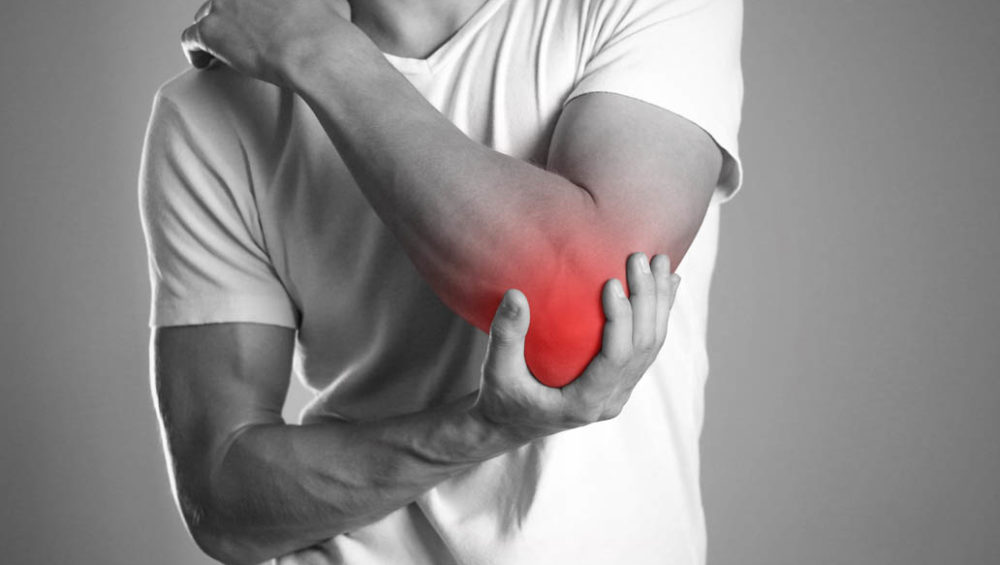Tennis elbow is a common term used to describe a more specific clinical diagnosis, called lateral epiconitis. It is often described as an overuse injury and is related to the continuous overload of the forearm extensors (the muscles that stretch your wrist/fingers). These muscles are attached near the bony protrusion on the outside of the elbow, and pain is felt directly above or below the area. In more severe cases, it may also extend to the upper forearm of your wrist.
What causes tennis elbow?
Tennis elbow usually develops over time. Repetitive movements (for example, holding a racket during a swing) may strain the muscles and put too much pressure on the tendons. Sustained tension will eventually cause microscopic tears in the tissue.
Tennis elbow might result from:
- Tennis
- Racquetball
- Squash
- Fencing
- Weight lifting
Ways to prevent or protect yourself from tennis elbow
Early recognition and treatment of elbow pain is the key to preventing tennis elbow and other similar repetitive stress injuries. Taking regular breaks to stretch and doing light exercises of the forearm muscles can help promote circulation. It also helps to maintain the mobility of the wrists, forearms and elbows. Try to avoid working due to discomfort, especially when there is a time limit. Gently massaging your sore arms can relieve aches and pains and help you recognize early warning signs to prevent them from getting worse.
How can I treat tennis elbow?
- Initial signs of persistent elbow pain or discomfort: Rest your arms and avoid repetitive pressure.
- Gently stretch the forearm and wrist muscles throughout the day.
- Massage and apply Spray-on Relief to your elbows several times a day for 15 to 20 minutes.
- When participating in anti-sport activities or typing, try to support the elbow with a bandage to reduce stress.
- Change your daily exercise habits and avoid activities that make pain worse.
- Change your work habits and/or adjust the workbench to reduce repetitive stress. If using these strategies does not improve your symptoms, your doctor may recommend physical therapy to help you relieve your pain faster.



